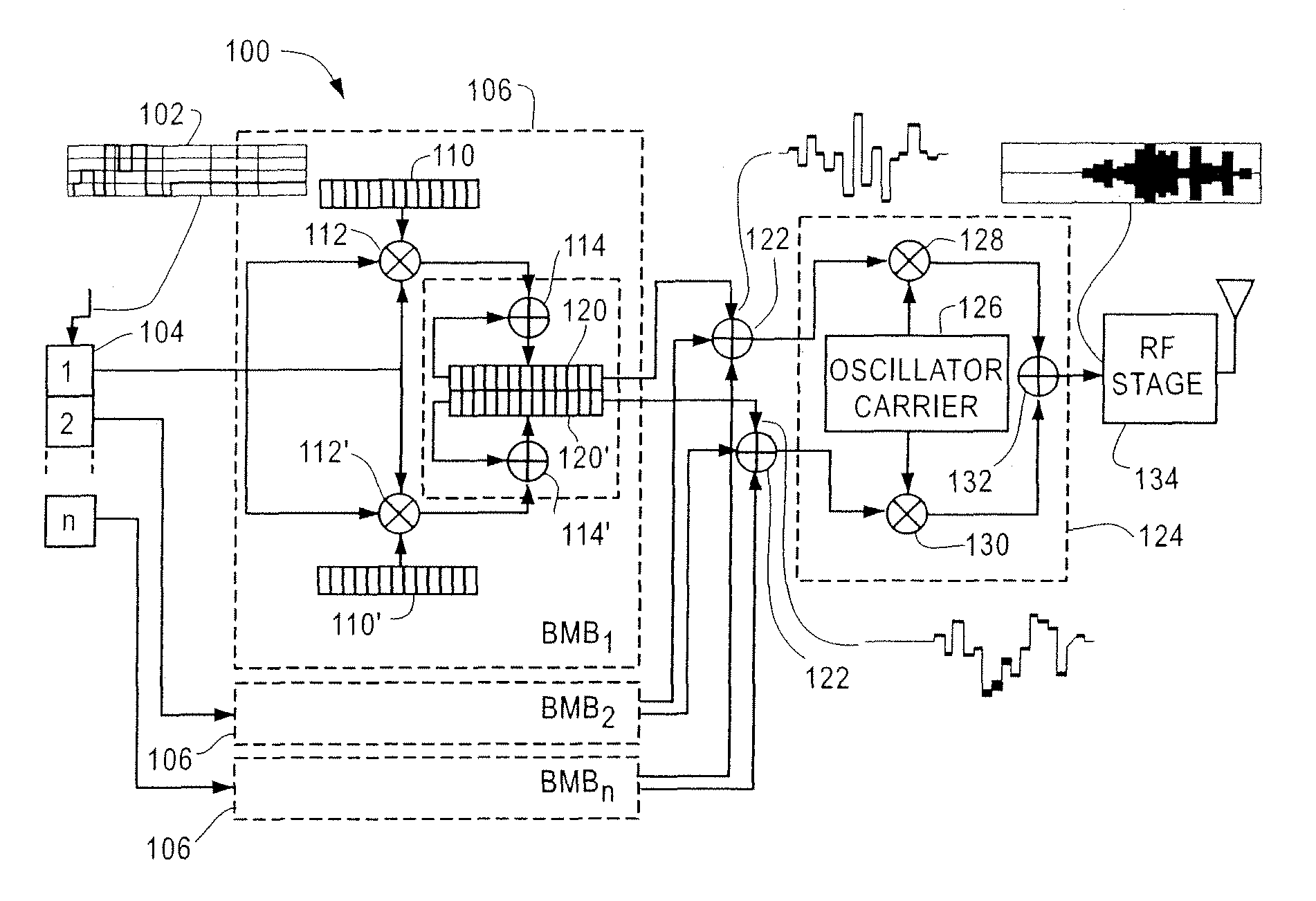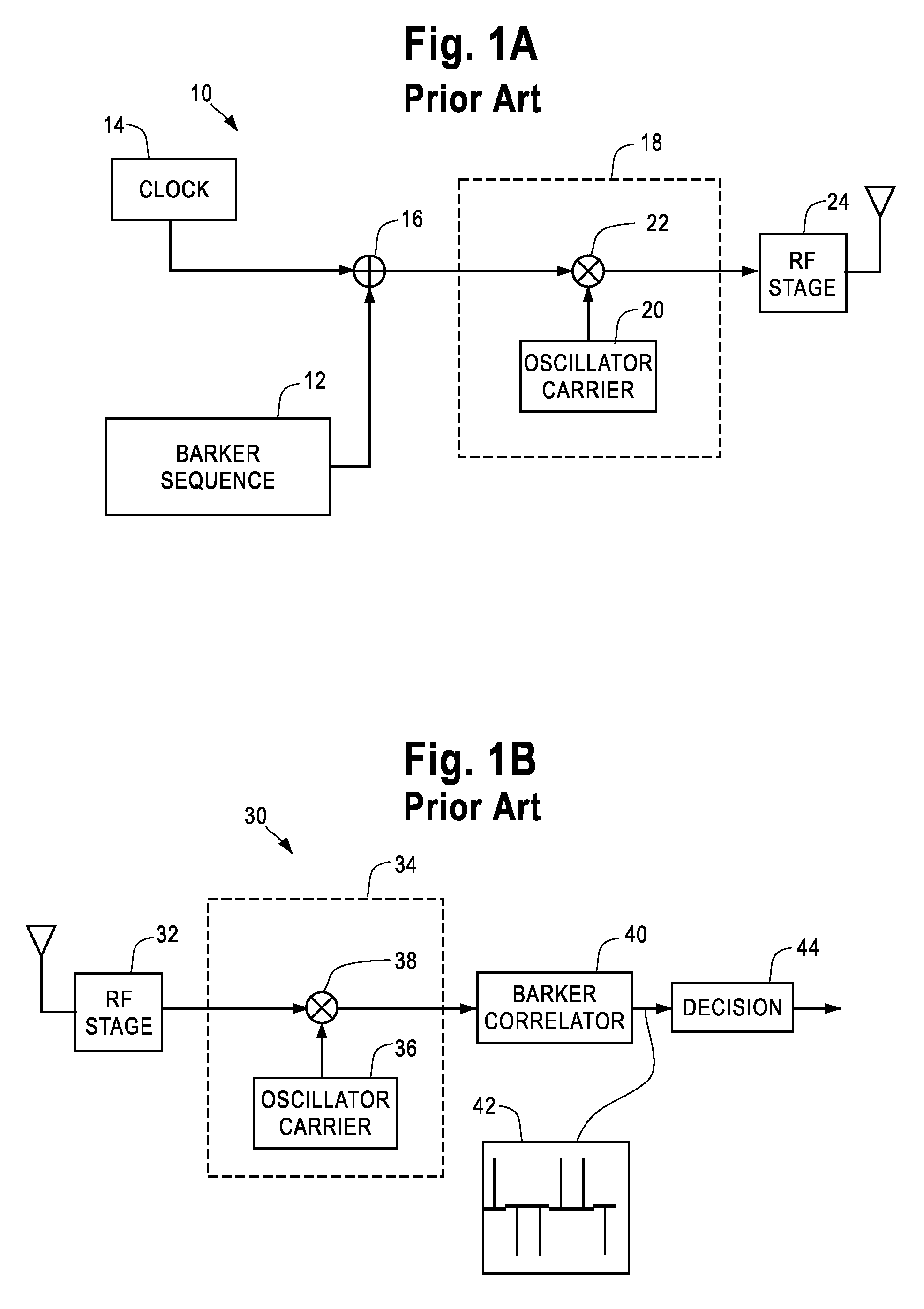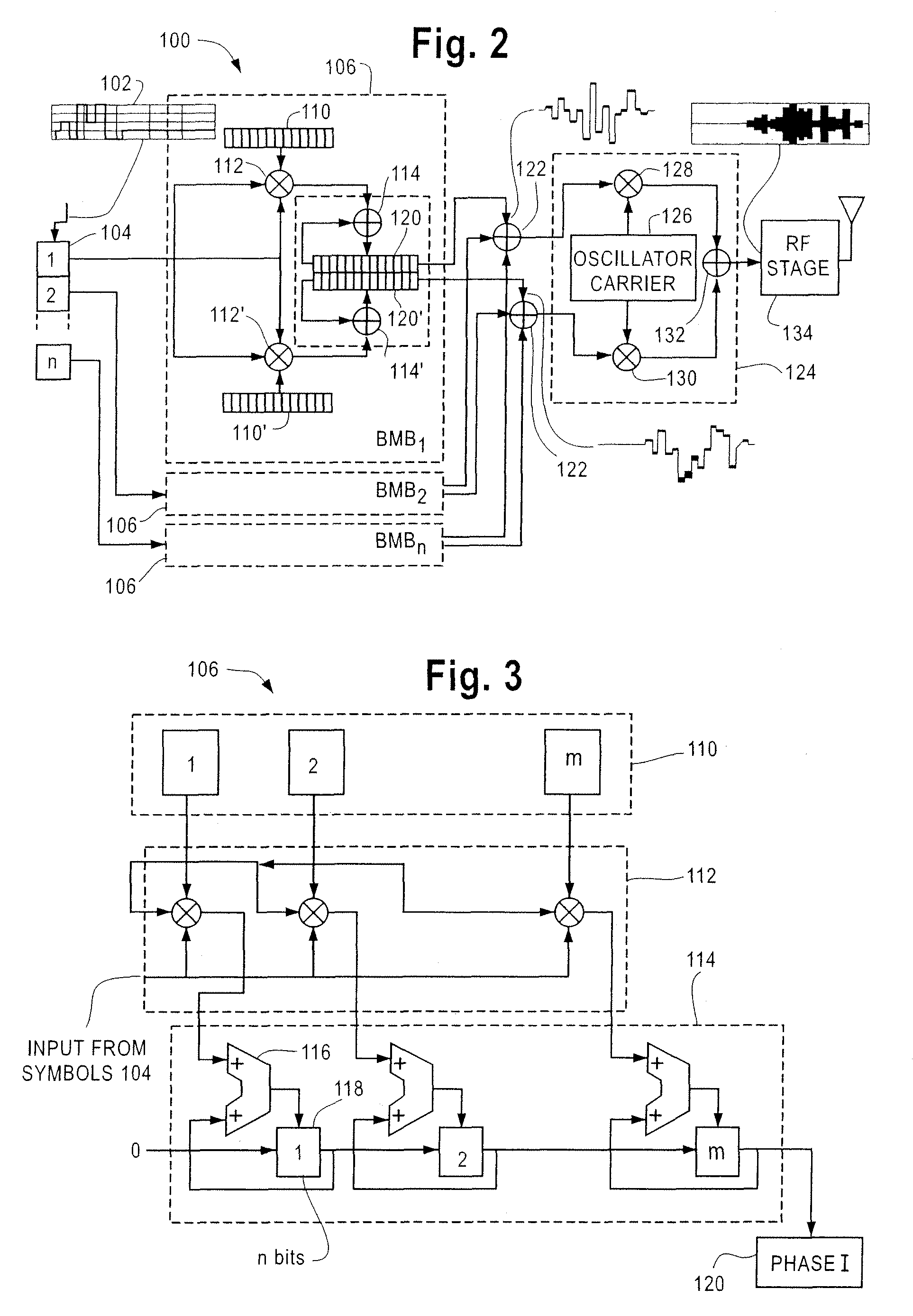Method, transmitter and receiver for spread-spectrum digital communication by Golay complementary sequence modulation
a complementary sequence and digital communication technology, applied in the field of modulation and demodulation methods, can solve the problems of increasing the restriction of this technique, reducing the signal to noise ratio during reception, etc., and achieve the effect of increasing the transmission rate and increasing the transmission ra
- Summary
- Abstract
- Description
- Claims
- Application Information
AI Technical Summary
Benefits of technology
Problems solved by technology
Method used
Image
Examples
Embodiment Construction
[0034]FIGS. 1A and 1B shows a block diagram of a prior art transmitter and receiver for a Direct Sequence Spread Spectrum (DSSS) communication system, respectively. In the examples of FIGS. 1A and 1B, the sequence used to spread the spectrum is a Barker sequence. A Barker sequence is a sequence of symbols which may vary in length but typically have a maximum length of 13 bits. When embedded in a string of randomly chosen symbols, Barker sequences have a close but not ideal autocorrelation. Barker sequences are used to check, and if necessary to correct, the synchronization and framing of received data.
[0035]FIG. 1A illustrates a transmitter 10 used to transmit a Barker sequence 12. The Barker sequence may be any valid Barker code of any proper length, typically between 2 and 13 bits. The barker sequence is summed with a clock 14 at a binary adder 16. The clock 14 may be run at any desired speed such as, for example, 1 MHz. The output at the adder 16 may be input into a modulator 18....
PUM
 Login to View More
Login to View More Abstract
Description
Claims
Application Information
 Login to View More
Login to View More - R&D
- Intellectual Property
- Life Sciences
- Materials
- Tech Scout
- Unparalleled Data Quality
- Higher Quality Content
- 60% Fewer Hallucinations
Browse by: Latest US Patents, China's latest patents, Technical Efficacy Thesaurus, Application Domain, Technology Topic, Popular Technical Reports.
© 2025 PatSnap. All rights reserved.Legal|Privacy policy|Modern Slavery Act Transparency Statement|Sitemap|About US| Contact US: help@patsnap.com



